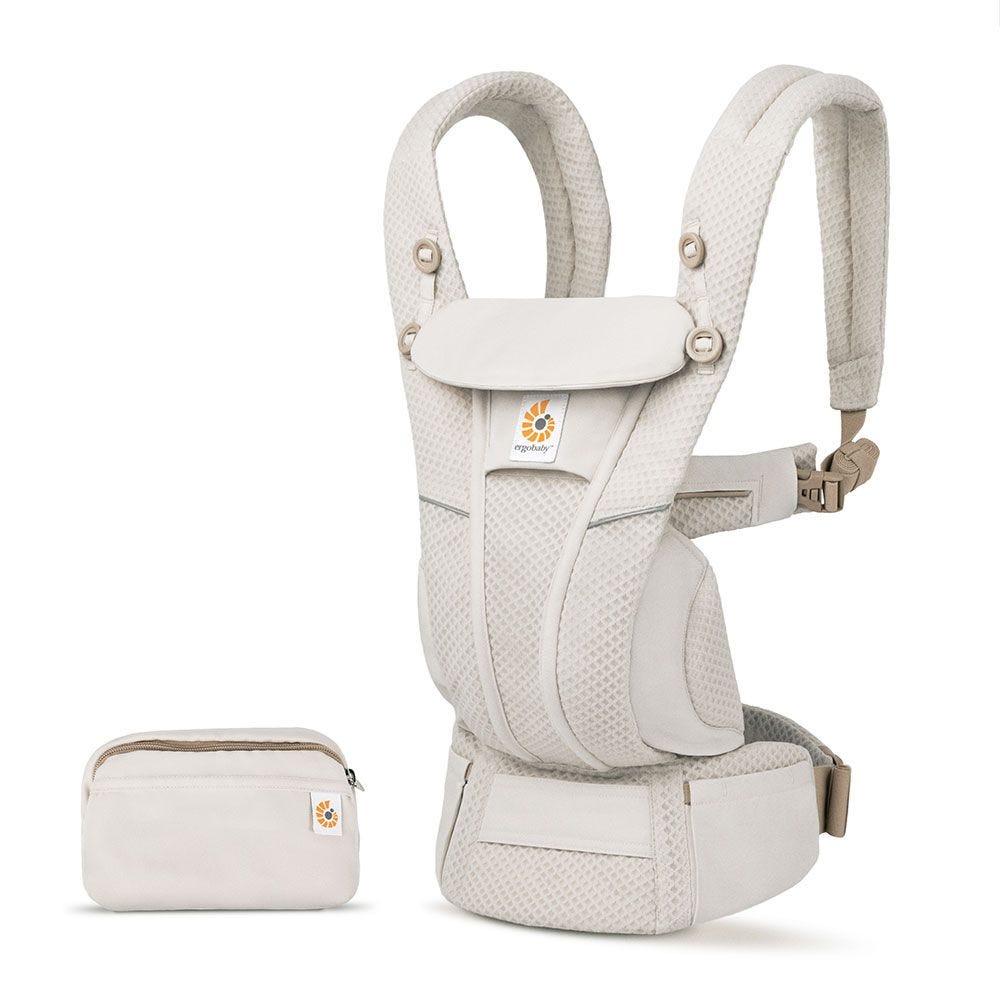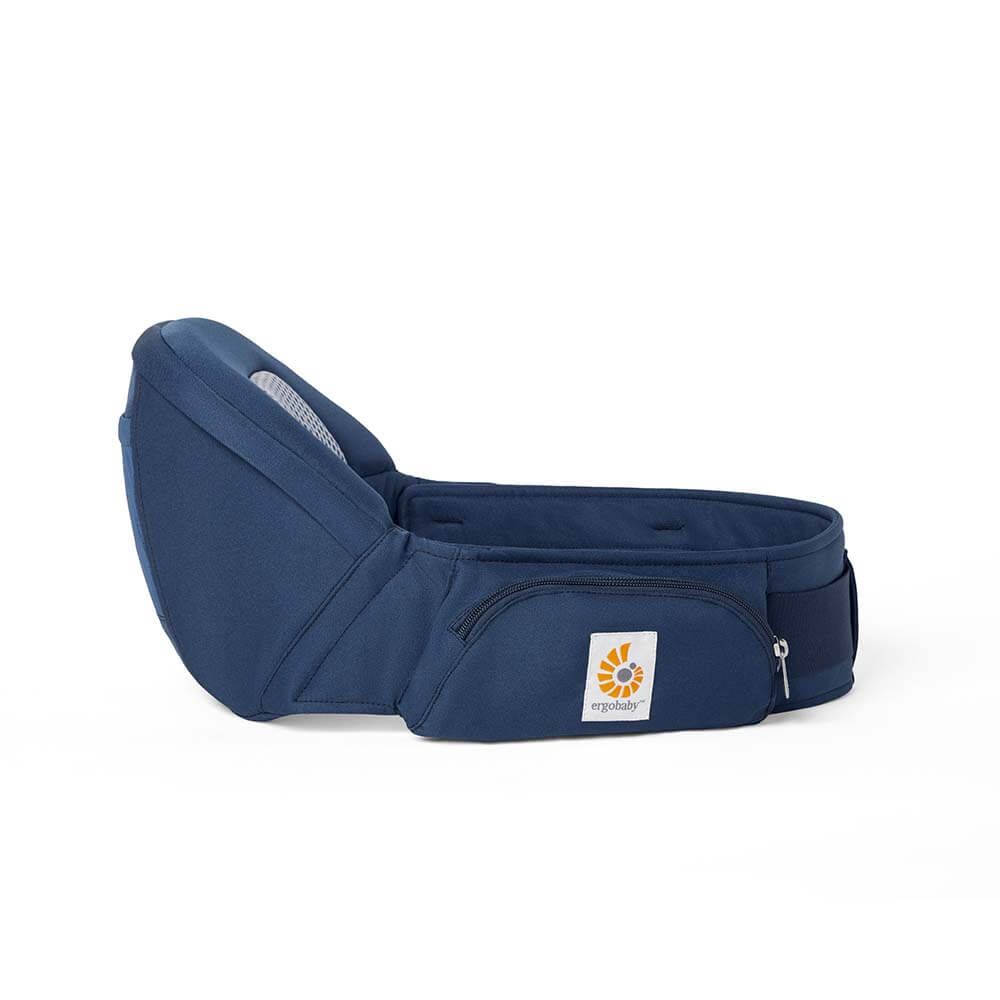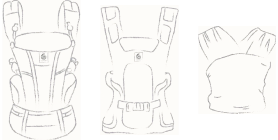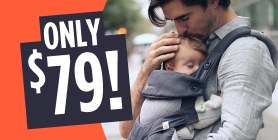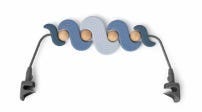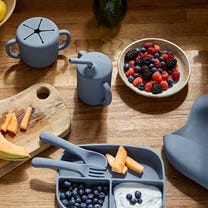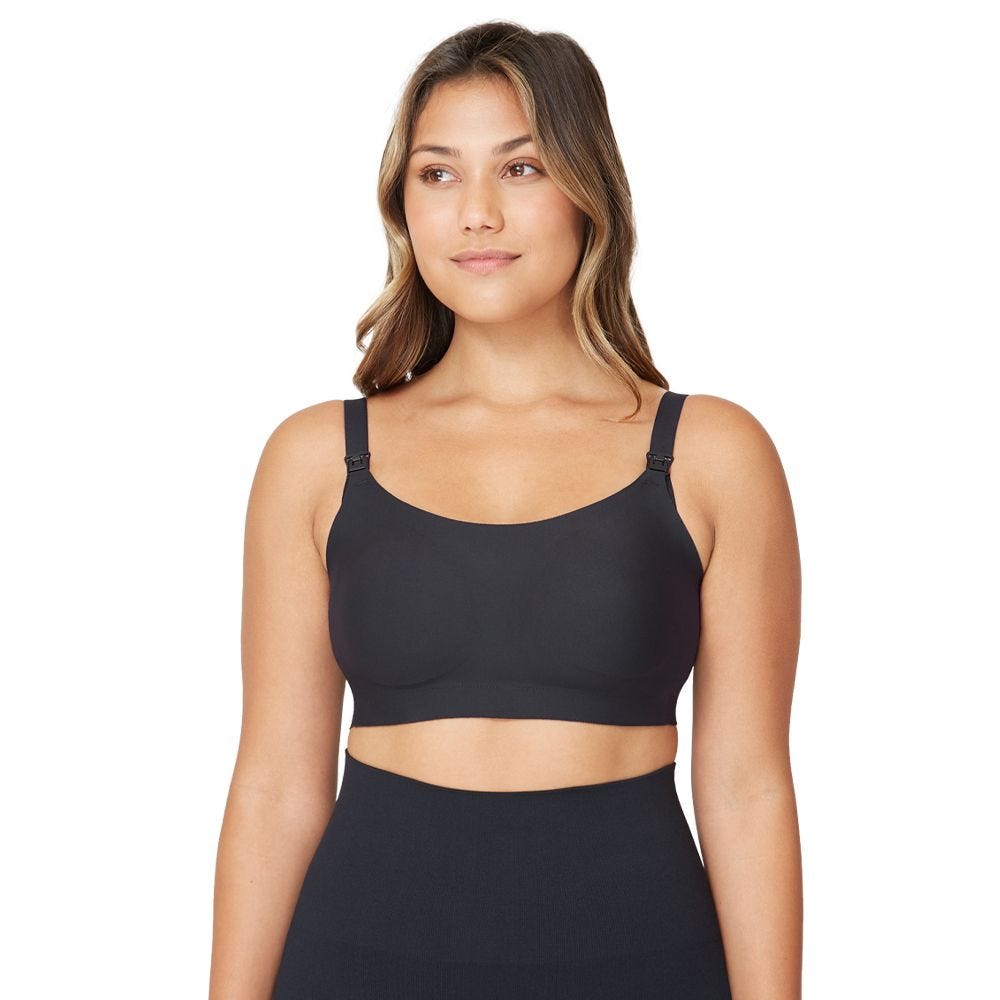Safe & Happy Babywearing
The growing popularity of babywearing in our modern society makes more parents aware of an amazing tool to meet their children’s need to be close to them while keeping up with a busy schedule. Very young babies feel most secure when they in their parents’ arms, where food and warmth are readily available. A toddler can be kept safe from vehicles or other dangers in public, and receive the reassurance that a loving caregiver provides when they become overstimulated. As with any tool, there are guidelines to make its use as safe as possible.
Safely wearing your baby begins with choosing the right carrier. There are many choices in modern baby carriers, to fit every budget and style. Make sure the carrier you choose is appropriate for the age of your baby. Is your child within the stated weight guidelines? Is there an insert necessary for a newborn? Be sure to read the manufacturer’s directions and consult an educator or babywearing group if you need further instructions. Shop at reputable dealers to ensure that your carrier is authentic and follows current safety guidelines. Check your carrier periodically to make sure all seams and fasteners are intact and working properly.
When trying a new carrier or a new carrying technique, make sure you and baby are well-rested, and baby is fed and content. Use a spotter if someone is available. If not, practice over a soft surface, or from a sitting or kneeling position. Having a mirror handy will allow you to check your progress from all angles. Very young babies need good neck and head support at all times in order to protect their airways. This can be accomplished in upright, chest to chest carrying positions, with the carrier pulled to about mid ear level behind their head. Make sure buckles clip completely or knots are secure.
Some Do’s and Don’ts for safe and happy babywearing:
- Do monitor baby’s breathing at all times. Make sure a young infant’s chin is off of his or her chest and the back is supported.
- Do return baby to an upright position after breastfeeding.
- Do watch your step, as your balance can be affected while wearing.
- Do be aware of your surroundings, as the two of you take up more space than you do alone. Be particularly mindful of doorways, furniture corners, or car doors.
- Do pay attention to what baby can reach from his or her new vantage point!
- Do make sure that baby’s face is visible at all times and that it does not become covered by the fabric of the carrier.
- Do keep baby “close enough to kiss.”
- Do include baby in day to day activities such as cleaning, laundry and prep kitchen & cooking work, however not around heat such as cooking on the stove.
- Don’t perform any activity that requires the use of safety equipment. Some examples might include bike riding, boating, or downhill skiing.
- Don’t bend over at the waist when baby is in the baby carrier. The baby carrier is great for performing tasks such as cleaning and laundry, but move safely. Squat down instead, bending your knees. (It’s better for your back, too!)
- Don’t use a carrier in a car. A carrier does not take the place of proper carseat usage!
- Don’t participate in physical exercise that involves excessive jumping or shaking. A walk or hike is a great babywearing exercise; however, jogging or trampoline need to wait.
Many babywearers are faced with the question “Is that thing safe?” at some point in their babywearing journey. The resounding answer is YES! with just a few simple guidelines. Finding the right carrier for the age and stage of the baby, keeping baby close, and monitoring frequently will set the stage for a mutually beneficial wearing relationship between caregiver and little one, and will enable you to experience the convenience, comfort, and joy of babywearing for years to come.

